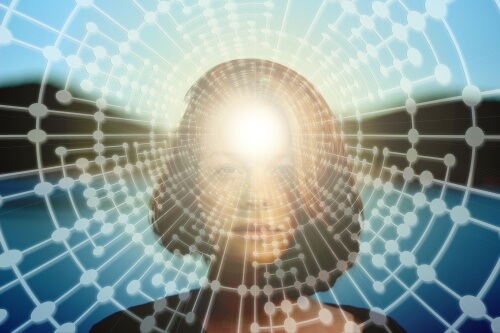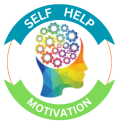Just what are the effects of visualization on the brain? Read on to learn about these effects and see how they can help you with your learning!
Table of Contents

Hi. Ian here and welcome to this article!
Have you ever wondered what happens in your brain when you visualize something?
It turns out, visualization is a powerful tool that can have a profound impact on your brain function and overall well-being.
In this article, we’ll explore the science behind visualization and discuss some of the amazing ways it can benefit your brain. We’ll also cover some tips on how to practice visualization effectively.
What is visualization?
Visualization is the act of creating mental images in your mind. It can be used for a variety of purposes, such as setting goals, improving performance, and managing stress.
When you visualize something, your brain activates the same regions that are active when you experience that thing. For example, if you visualize yourself playing a sport, your brain will activate the same active regions when you’re playing that sport.
This is because your brain can’t distinguish between real and imagined experiences. When you visualize something vividly, your brain creates neural pathways that are just as strong as those created when you experience something in the real world.
How does visualization affect the brain?
Visualization can affect the brain in several ways, including:
- Improved motor performance: Visualization can help to improve motor performance by activating the same brain regions that are active when you physically perform a skill. For example, studies have shown that athletes who visualize themselves performing well tend to perform better than athletes who don’t visualize.
- Enhanced creativity and problem-solving: Visualization can also help to enhance creativity and problem-solving skills. This is because visualization allows you to explore different ideas and solutions in your mind without having to try them out. For example, studies have shown that students who visualized themselves solving math problems performed better on math tests than students who didn’t visualize.
- Reduced stress and anxiety: Visualization can also be used to reduce stress and anxiety. This is because visualization can help you to relax and focus on positive thoughts and images. For example, studies have shown that people who visualize themselves in calming and relaxing environments tend to experience lower levels of stress and anxiety.
- Improved mood and motivation: Visualization can also be used to improve mood and motivation. This is because visualization can help you see yourself achieving your goals and living a happy and fulfilling life. For example, studies have shown that people who visualize themselves achieving their goals are more likely to achieve those goals.
- How to practice visualization effectively
To practice visualization effectively, follow these tips:
- Find a quiet place where you won’t be disturbed.
- Close your eyes and take a few deep breaths to relax.
- Focus on the thing you want to visualize. If it’s a physical activity, imagine yourself performing the activity with ease and precision. If it’s a goal you want to achieve, imagine yourself achieving that goal and feeling the positive emotions that come with it.
- Use all of your senses in your visualization. Imagine what you see, hear, smell, taste, and feel. The more vivid your visualization, the more effective it will be.
- Practice visualization regularly for best results.
Visualization is a powerful tool that can have a profound impact on your brain function and overall well-being. By practicing visualization regularly, you can improve your performance, reduce stress and anxiety, and boost your mood and motivation.
If you’re interested in learning more about visualization, here are a few resources to check out:
- The Power of Visualization: How to Use the Power of Your Mind to Create the Life You Want by Shakti Gawain
- Mind to Matter: How to Use Your Mind to Heal Your Body by Dr. Deepak Chopra
- The Visualization Journal: A Guided Workbook for Creating the Life You Want by Gabrielle Bernstein
Thanks for reading!
We are visual creatures. Even if you’re not an artist, you likely use visualization skills daily to get through your workday. Whether it be creating charts in Excel or imagining what your next steps will be at the grocery store, our brains are constantly processing images and thinking visually.
What many people don’t know is how much of an effect this has on our brains! From increased memory retention to improved performance in certain activities, there are several benefits of visualization for both children and adults alike.
Scientific Benefits Of Visualization
It’s important to take care of your brain, and visualization is one way you can do that. Visualization has been shown to increase intelligence, creativity, and problem-solving skills.
Your ability to visualize is an innate skill that allows you to create images inside your mind with thoughts alone.
By visualizing something before it happens (like a successful meeting), scientists believe this strengthens neural connections in the part of the brain responsible for future planning – creating new pathways that will make it easier for these events to occur. This makes visualization very powerful.
Neuroscience Of Visualization
Everyone has experienced what it is like to visualize something. Whether you are simply imagining the way that a room looks, or thinking about your favorite vacation spot, visualization happens all the time. However, there’s much more to this than just daydreaming; research shows that visualizing things actually changes how our brains work!
For example, when you imagine yourself running around in your mind’s eye, you activate an area of your brain called the premotor cortex which is typically associated with planning and executing the movement.
Visualization can be used as a tool to improve different areas of life such as learning new skills or overcoming fears and phobias. With these benefits in mind, why not give visualization a try? You might find that it works.

Power Of Visualization
The effects of visualization on the brain are hard to ignore. This is because when someone visualizes something, their brain thinks it’s happening, leading to increased levels of dopamine and serotonin. When people visualize themselves in a certain situation they will have more motivation for that goal. Visualizing your future can be very helpful when you’re trying to reach your goals!
Visualization Muscle Growth Study
Visualization has been used for centuries as a way to improve performance. It is the act of seeing something play out in your mind’s eye and imagining it happening.
While visualization seems simple enough, some studies show that doing this regularly over time may alter the physical structure of your brain! So if you want to get better at anything (sports, music) then try using visualization on top of all the hard work you’re already putting into it – because science says it works!
Benefits Of Visualization In Sports
Visualization is an important part of any athlete’s training regime. The mind can often be a limiting factor, but visualization helps the brain to overcome those limits and do things that would have been thought impossible before. That being said, there are some benefits to visualizing exercises on your own too!
Research has shown that sports that require quick decision-making and reaction times benefit from mental practice more than others because it allows athletes to improve their ‘mental models‘ of certain scenarios or events without actually having experienced them yet.
This allows players to make better decisions in a shorter amount of time during games where split seconds can mean life or death for them and their teams.
It is important to visualize things before you do them:
Michael Jordan
What Are The Effects Of Visualization?
Visualization is a powerful tool to help achieve goals. It has been found that visualization can even create new neurons in the brain! The more you visualize yourself achieving your goal, the closer you are to actually achieving it.
It’s easy and fun too! Try following these three steps:
- Decide what your goal is
- Picture yourself doing whatever actions will lead to reaching this goal
- Imagine all the good things that will happen when you reach this goal – how excited you’ll feel, how proud everyone else will be of you, etc.
Then just do it! With visualization as a guide, there’s no way for anything but success!
How Can Visualization Affect Behavior?
The human brain is a fascinating thing. It’s the powerhouse behind our thoughts, feelings, and actions. It’s also incredibly sensitive to stimuli from our environment – which can have both positive and negative effects on it.
One of these environmental stimuli is visualizations, which visualize how your life could be in the future if you take certain steps today! Visualizations can help us form new habits or change old ones by giving us an idea of what that habit will look like in the future.
They’re not just for visualization though – they can also help us understand patterns in data more easily by showing them visually!
But what about when we get so caught up in this visualization that it impacts how we behave? The answer may surprise you…
Positive visualization has been used for years to help change behavior, but how can it affect us? The key is in the way our brain processes images. Visualization stimulates the same area of our brain that would be activated if we were doing what we are visualizing.
This means that by simply imagining ourselves achieving a goal of getting something done, we are creating neural connections and learning new habits.
This connection between imagination and achievement helps with many different things – from developing better study habits to increasing motivation to exercise more often – making visualization an important tool in changing your behavior.

Which Part Of The Brain Does Visualization Activate?
Have you ever noticed how an image can often evoke a feeling or memory? The power of visualization is undeniable. It’s important to know that this process is not just something we do in our heads – it actually affects the brain and your whole body!
For example, when someone visualizes running up a flight of stairs, their heart rate will increase and their muscles will contract as if they were really doing it. This type of mental activity activates the same parts of the brain used for physical action: the motor cortex and the somatosensory cortex.
So next time you’re looking for motivation to get things done, start by picturing what it would look like if you had already done them!
Does Visualization Make You Smarter?
A new study by scientists at the University of California, Santa Barbara has determined that visualization makes you smarter. The study found that visualizing an action helps to improve your memory and ability to act in real life.
It is important to note, however, that this only applies to positive visualization. Visualization should be used to supplement other learning methods rather than being relied upon exclusively. This can also be applied when studying for tests or preparing for presentations.
FAQ
Why is visualization so powerful?
There are many reasons why visualization is powerful. One reason is that when we visualize something, the brain starts preparing for that which was visualized.
Why do athletes use Visualisation?
Athletes use visualization to increase their confidence and therefore, improve their performance.
Which part of the brain does visualization activate?
The frontal cortex is the part of your brain where you solve problems and make decisions. When you visualize, it can help to come up with solutions to a problem.
What are the effects of visualization?
There is a great deal of scientific evidence that supports the benefits of visualization. In fact, studies have shown that visualization can be an effective tool for increasing performance, achieving goals, relieving pain, improving sleep, and reducing stress.
Final Words
Visualization is the act of creating a mental image of a desired outcome. When you visualize, you are essentially rehearsing for success. Visualization can help you improve your performance in many areas of life, including athletics, music, public speaking, and even academics.
There are a few different ways that visualization can work. One way is by helping you to create a more positive mindset. When you focus on positive images and experiences, it can help to shift your focus away from negative thoughts and emotions. This can lead to several benefits, including improved mood, increased self-esteem, and reduced stress.
Another way that visualization can work is by helping you to develop new skills. When you visualize yourself performing a task, it can help to improve your neural pathways and make it easier for you to perform the task in real life. This is why visualization is often used by athletes and musicians to improve their performance.
Finally, visualization can also help you to achieve your goals. When you visualize yourself achieving your goals, it can help to increase your motivation and make it more likely that you will achieve them. This is because visualization can help you see yourself as already having achieved your goals, which can make it easier for you to take the steps necessary to make them a reality.
If you want to start using visualization to improve your life, there are a few things you can do. First, find a quiet place where you won’t be disturbed. Once you’re in a comfortable position, close your eyes and take a few deep breaths.
Now, start to visualize your desired outcome. What do you want to achieve? What does it look like? What does it feel like? The more detail you can add to your visualization, the more powerful it will be.
Continue to visualize your desired outcome for a few minutes. As you do, focus on all the positive emotions that come with achieving your goal. Feel the excitement, the satisfaction, and the pride.
When you’re finished visualizing, take a few deep breaths and open your eyes. You may feel a little different than you did before. That’s because visualization can have a powerful impact on your mind and body.
Here are some tips for effective visualization:
- Be specific. The more specific you are in your visualization, the more powerful it will be.
- Use all of your senses. When you visualize, try to use all of your senses. This will help you to create a more realistic and immersive experience.
- Make it positive. Visualization is most effective when you focus on positive images and experiences.
- Believe in yourself. Visualization is only effective if you believe that it can work. If you have doubts, your visualization will be less powerful.
Visualization is a powerful tool that can be used to improve your mental and physical health, as well as your performance in many areas of life. If you are looking for a way to improve your life, visualization is a great place to start.
Wishing you Health, Wealth, and Happiness
